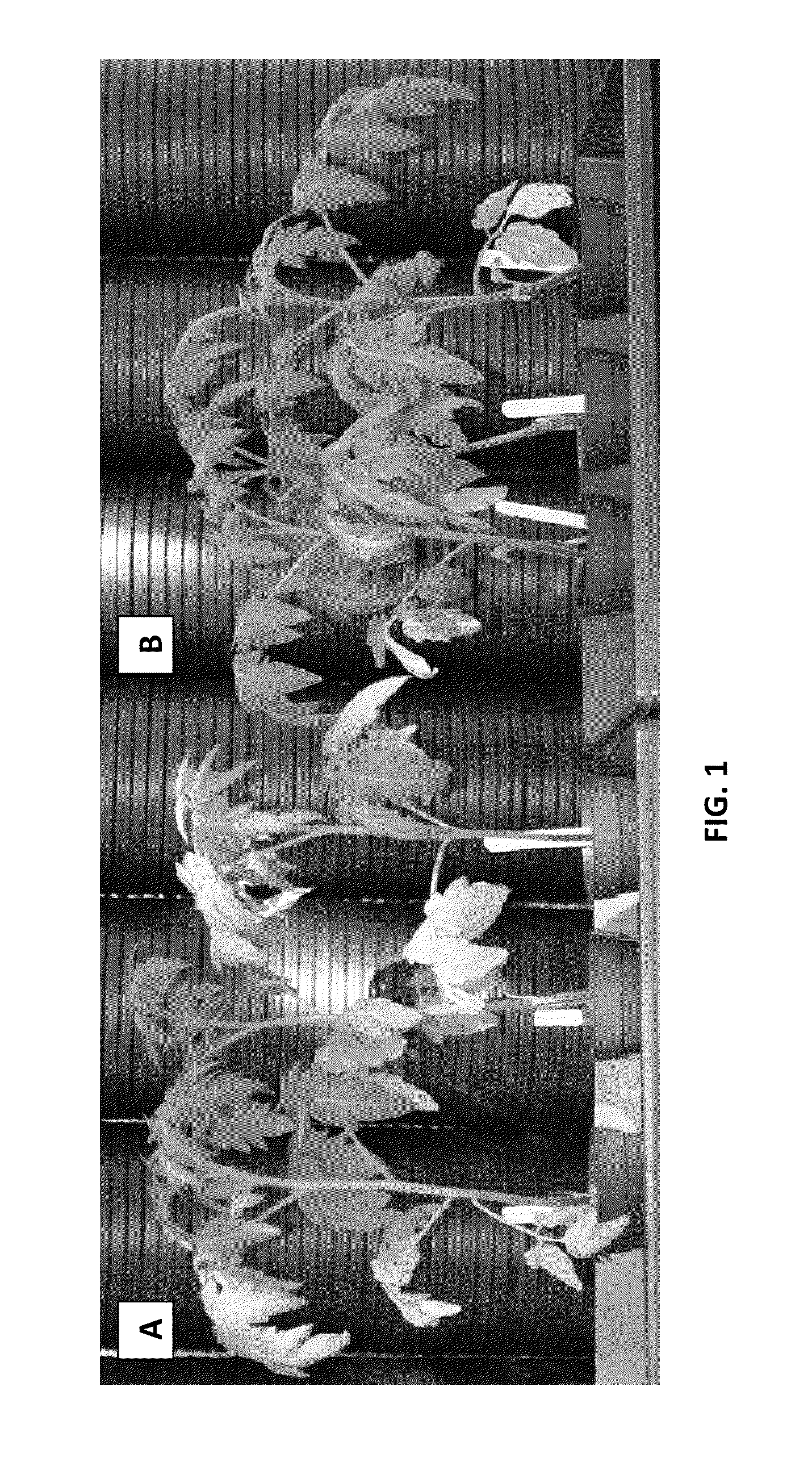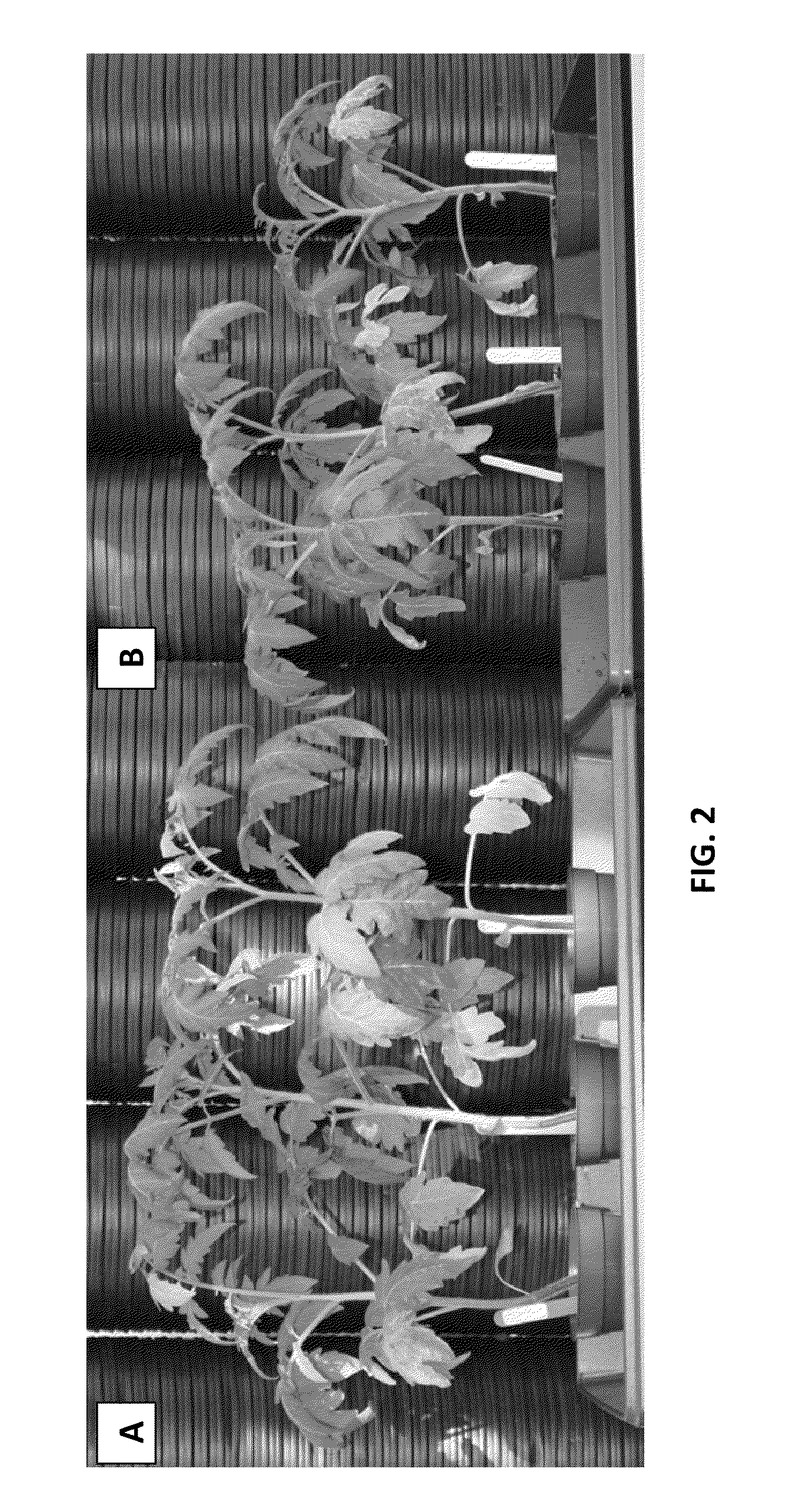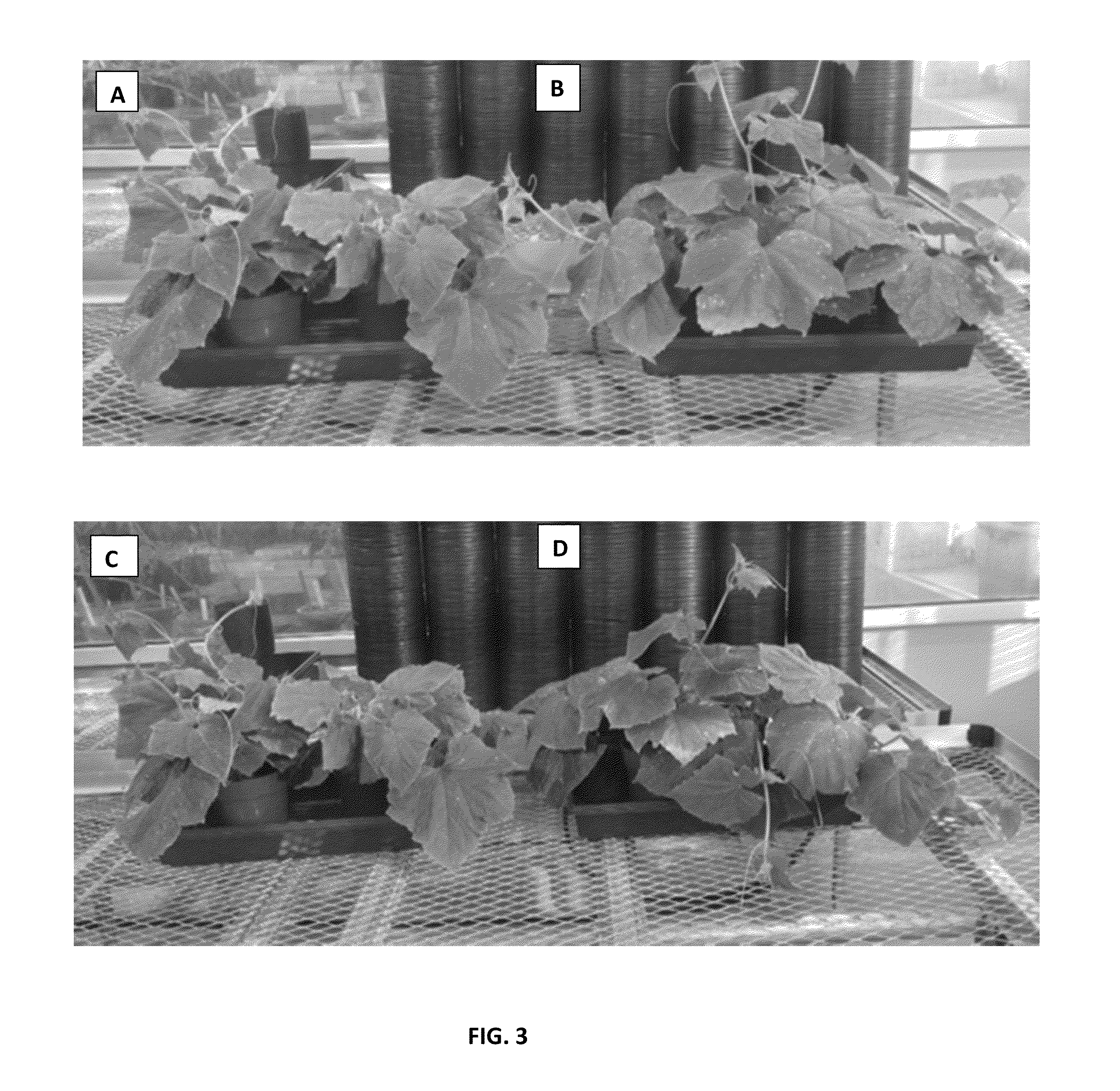Planting matrices comprising bacillus spp. microorganisms for benefiting plant growth
a plant growth and matrice technology, applied in the field of plant growth, can solve the problems of affecting the ripening of fruits, affecting the economic benefits of the use of chemical agents, and stimulating plant growth and slowing fruit ripening
- Summary
- Abstract
- Description
- Claims
- Application Information
AI Technical Summary
Benefits of technology
Problems solved by technology
Method used
Image
Examples
example 1
Identification of a Bacterial Isolate as a Bacillus Licheniformis Through Sequence Analysis
[0041]A plant associated bacterial strain, designated herein as RTI184, was isolated from the root of rice grown in California. The 16S rRNA and the rpoB genes of the RTI184 strain were sequenced and subsequently compared to other known bacterial strains in the NCBI and RDP databases using BLAST. It was determined that the 16S RNA partial sequence of RTI184 (SEQ ID NO: 1) is nearly identical to the 16S rRNA gene sequence of two other known strains of B. licheniformis, Bacillus licheniformis strain 9945A (99%, 2 bp difference over 1545 bp in one copy of the 16S rRNA gene out of three different copies) and Bacillus licheniformis ATCC 14580 (99%, 8 bp difference over 1545 bp). In addition, it was determined that the rpoB sequence of RTI184 (SEQ ID NO: 2) has 100% sequence identity to known strain Bacillus licheniformis 9945A (CP005965) and 97% sequence identity to Bacillus licheniformis strain de...
example 2
Phenotypic Traits of Bacillus Licheniformis RTI184 Isolate
[0042]In addition to the antagonistic properties, various phenotypic traits were also measured for the Bacillus licheniformis RTI184 strain and the data are shown below in Table I. The assays were performed according to the procedures described in the text below Table I.
TABLE IPhenotypic Assays: phytohormone production,acetoin and indole acetic acid (IAA), andnutrient cycling of Bacillus licheniformis RTI184 isolate.Characteristic AssaysRTI184Acid production (Methyl Red)−Acetoin production (MR-VP)+++Chitinase activity+Indole-3-Acetic Acid production−Protease activity+Phosphate solubilization−Phenotypehard dry texture white / cream+++ very strong,++ strong,+ some,+− weak,− none observed
[0043]Acid and Acetoin Test.
[0044]20 μl of a starter culture in rich 869 media was transferred to 1 ml Methy Red—Voges Proskauer media (Sigma Aldrich 39484). Cultures were incubated for 2 days at 30° C. 200 rpm. 0.5 ml culture was transferred and ...
example 3
Growth Effects of Cucumber and Tomato when Grown in Potting Soil Enhanced with Spores of Bacillus Licheniformis RTI184 and CH200 Isolates
[0053]The ability of the isolated strains of Bacillus licheniformis RTI184 and Bacillus licheniformis CH200 to improve growth and health of tomato and cucumber was determined by planting seeds of each in potting soil to which the spores of each of the Bacillus licheniformis RTI184 and Bacillus licheniformis CH200 strains had been added.
[0054]The Bacillus licheniformis CH200 strain was deposited on Apr. 7, 2005 at Deutsche Sammlung von Mikroorganismen and Zellkulturen GmbH, Mascheroder Weg 1 b, D-38124 Braunschweig (DSMZ) and given the accession No. DSM 17236.
[0055]For the experiments using spores of RTI184 or CH200, the strains were each sporulated in 2XSG in a 14 L fermenter. Spores were collected but not washed afterwards at a concentration of at least 1.0×107 to 109 CFU / mL.
[0056]The effect of the presence of spores of the bacterial isolates RTI1...
PUM
 Login to View More
Login to View More Abstract
Description
Claims
Application Information
 Login to View More
Login to View More - R&D
- Intellectual Property
- Life Sciences
- Materials
- Tech Scout
- Unparalleled Data Quality
- Higher Quality Content
- 60% Fewer Hallucinations
Browse by: Latest US Patents, China's latest patents, Technical Efficacy Thesaurus, Application Domain, Technology Topic, Popular Technical Reports.
© 2025 PatSnap. All rights reserved.Legal|Privacy policy|Modern Slavery Act Transparency Statement|Sitemap|About US| Contact US: help@patsnap.com



